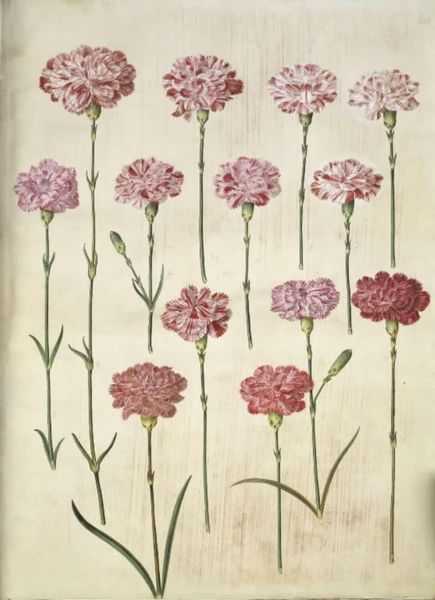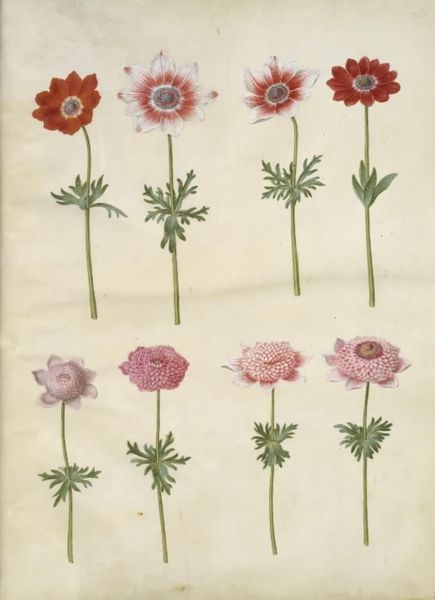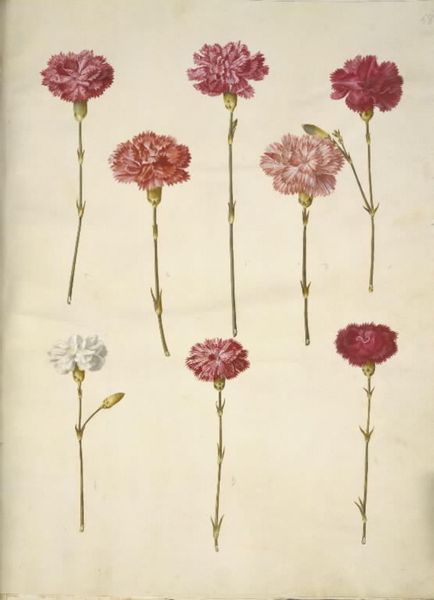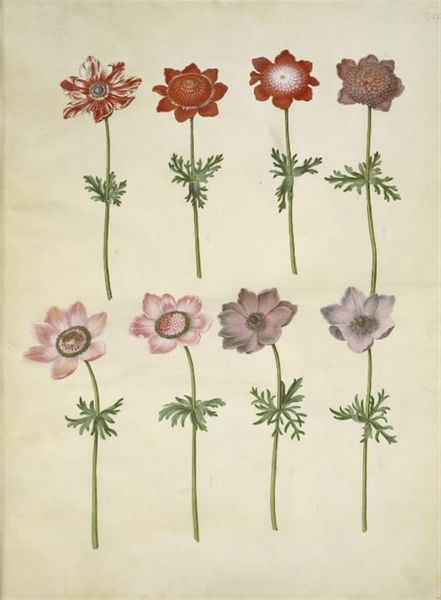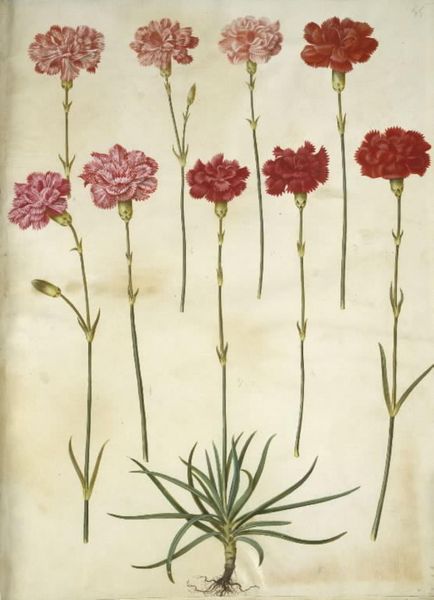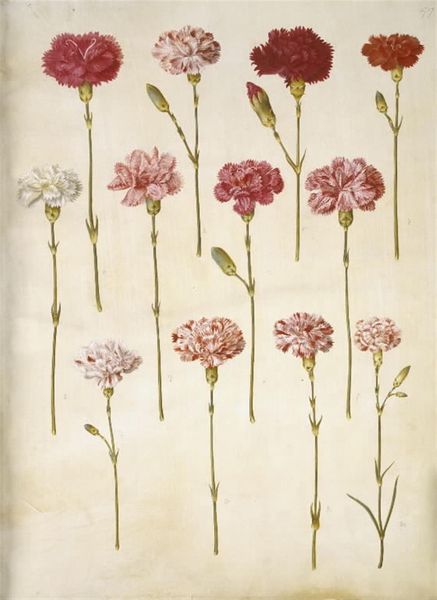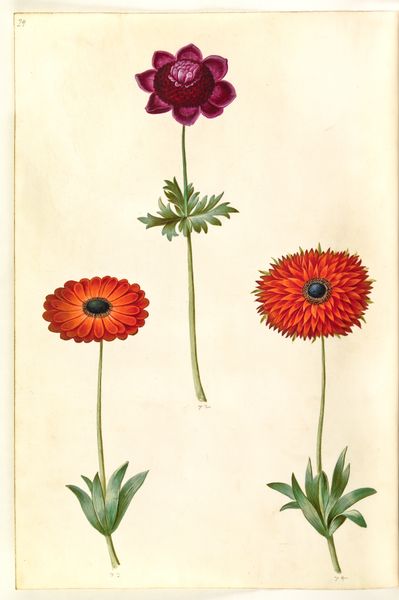
Anemone coronaria (fransk anemone); Anemone ×fulgens (skinnende anemone) 1649 - 1659
0:00
0:00
drawing, gouache, watercolor
#
drawing
#
water colours
#
gouache
#
11_renaissance
#
watercolor
#
botanical art
#
watercolor
Dimensions: 505 mm (height) x 385 mm (width) (bladmaal)
Editor: This is "Anemone coronaria; Anemone ×fulgens" created between 1649 and 1659 by Hans Simon Holtzbecker, using watercolor and gouache. The detail is just incredible! There’s almost a scientific quality to how the different varieties are captured. How do you see this work relating to its historical context? Curator: That "scientific quality," as you put it, speaks volumes. Consider the Dutch Golden Age during which this was created. Botanical art wasn’t just about aesthetics; it was intertwined with expanding trade routes and scientific exploration. Think of the East India Company bringing exotic plants back to Europe. Images like these functioned almost as records and status symbols. Editor: So, it's connected to colonialism, in a way? Curator: Precisely. The acquisition and display of these plants, documented in meticulous detail, underscored power and control over the natural world. These images played a part in how Europeans were understanding and classifying, but also exploiting, newly discovered environments. Notice the flat, even lighting – there’s little attempt at artistic interpretation in terms of shadow or perspective. What effect does that create, in your opinion? Editor: It does lend it a sense of objectivity, making it feel less subjective and more like a... well, like a specimen. So it served a purpose beyond mere decoration. Curator: Exactly. And consider where these images would be housed - perhaps in private collections alongside curiosities from around the globe, reinforcing that collector's worldly knowledge and power. Editor: That gives me a whole new perspective. I hadn’t really considered the politics embedded within what appears to be a simple floral study. Curator: That’s the beauty of art history, isn't it? Looking beyond the surface and seeing the complex web of social and historical forces at play. It makes you question the image, its intention, and the role it plays within a much bigger story.
Comments
No comments
Be the first to comment and join the conversation on the ultimate creative platform.
